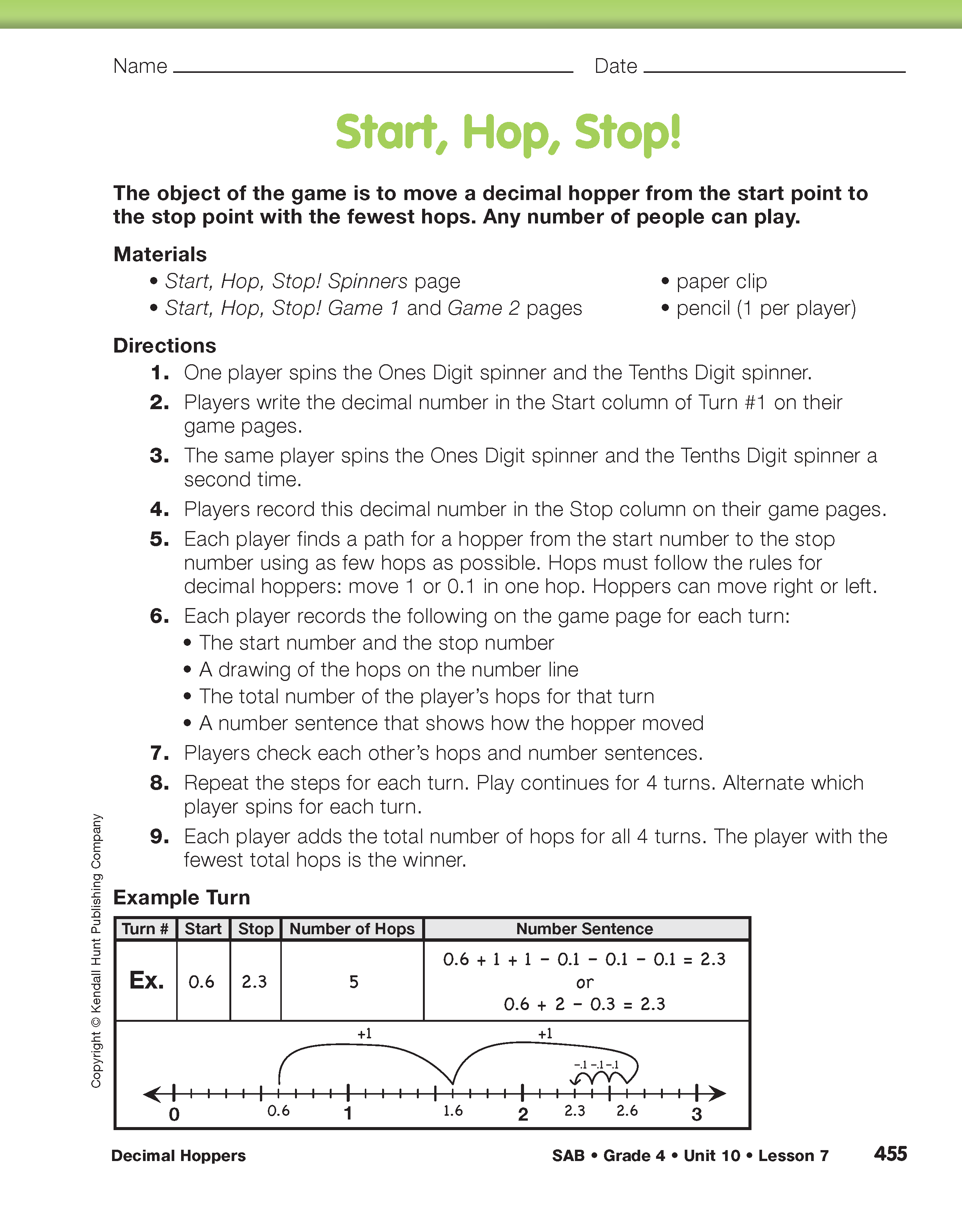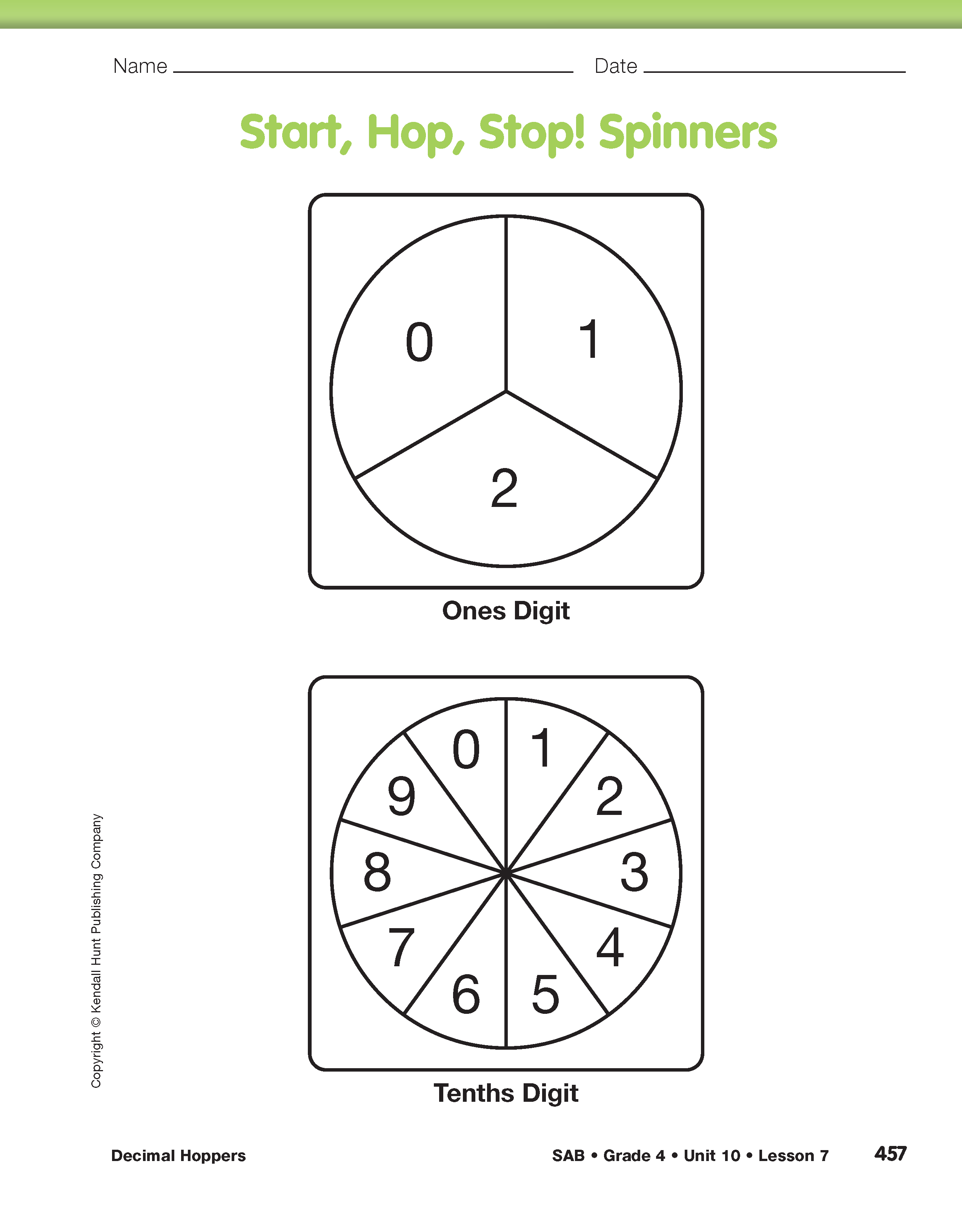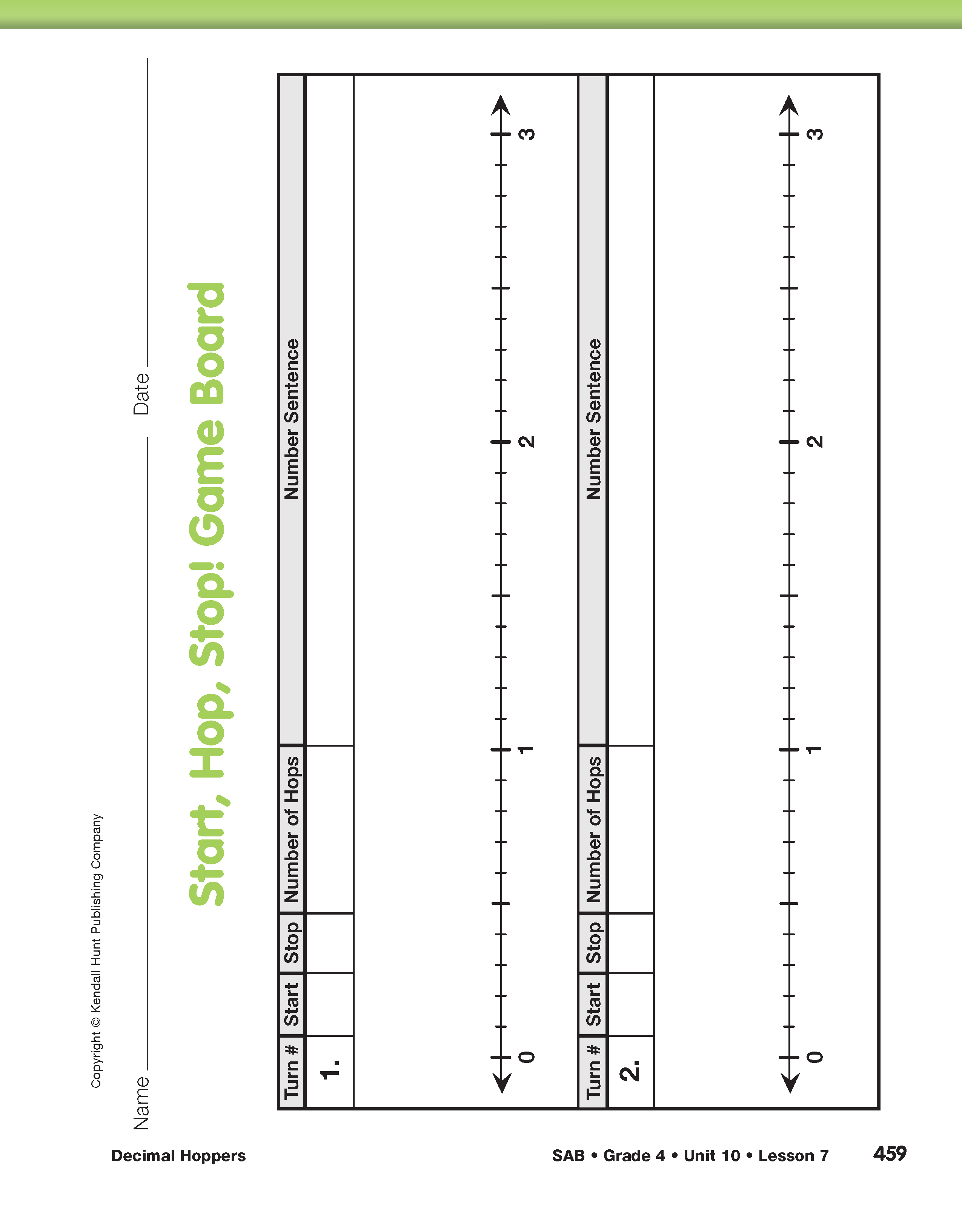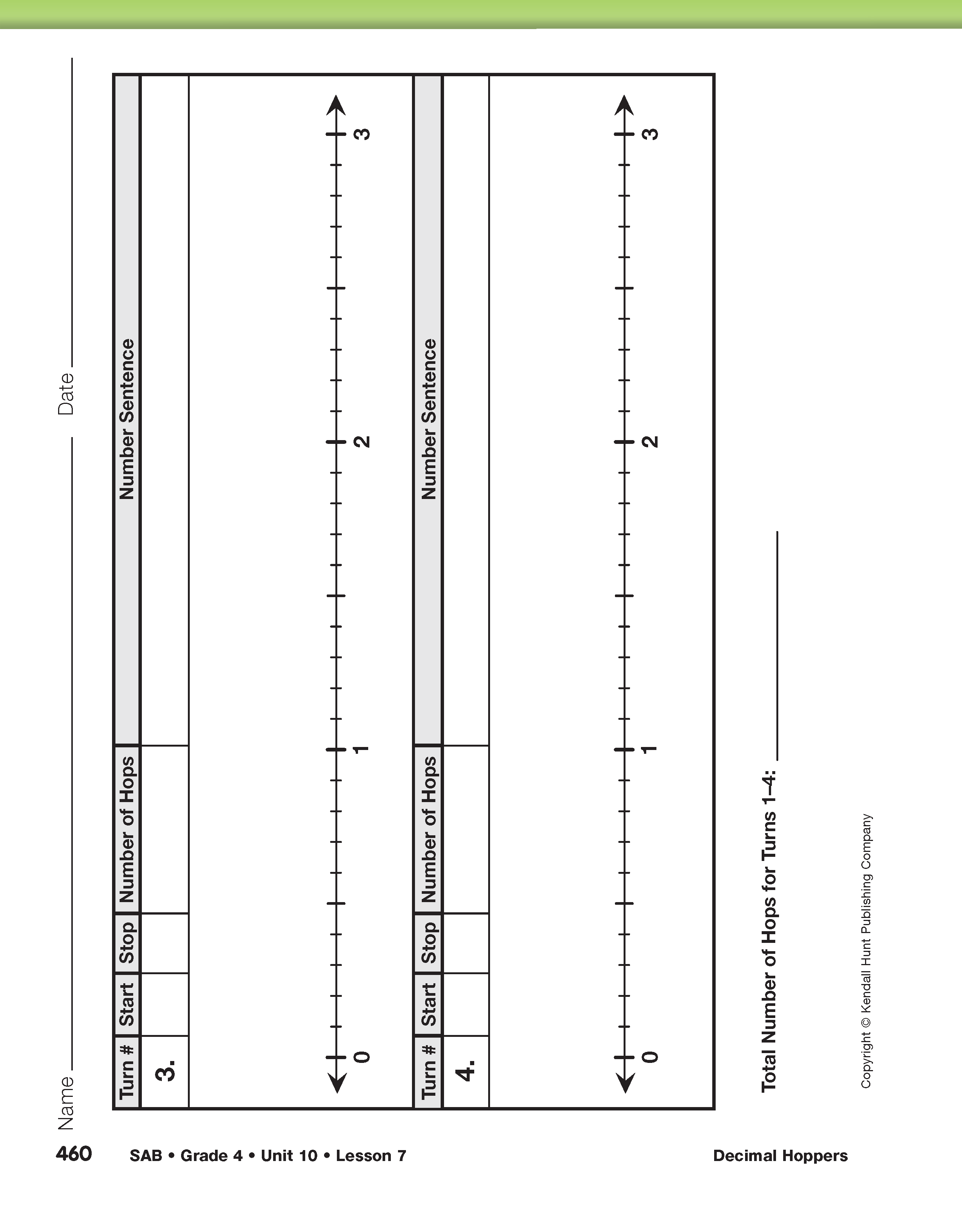Decimal Hoppers
Est. Class Sessions: 2Developing the Lesson
Part 2. Start, Hop, Stop!
Introduce the Game. In this part of the lesson, students practice representing the addition and subtraction of decimal numbers on the number line by playing a game involving decimal hoppers. The goals of the game are to:
- provide practice composing and decomposing decimal numbers according to place value;
- establish the concept that decimal tenths represent a distance of one-tenth of the unit whole on a number line;
- build conceptual foundations for addition and subtraction of decimal numbers.
Read with the whole class the directions for the game on the Start, Hop, Stop! page in the Student Activity Book. Display the spinners and a game page to demonstrate playing a few turns of the game as you read through the directions. Remind students of the following important points as they become familiar with the game:
- There is usually more than one path from the start point to the stop point.
- The object is to move from the start point to the stop point in as few hops as possible.
- Jumps must be made according to the way hoppers hop (established in Part 1 of the lesson).
- Students must record a number sentence for each turn.
Play the Game. Students play the game with a partner. Have students alternate who spins the spinner for each turn.
As students play the game, circulate and ask questions similar to the following:
Check whether students show understanding of place value in decimal numbers. For example, a common error students make is to interpret units as tenths on the number line. Figure 1 shows this error for a student moving a hopper from 1.0 to 2.3. In the example, the student starts correctly at 1, but then incorrectly moves one-tenth to represent the leap from 1 to 2. After adding three-tenths more, the student's hopper ends incorrectly on 1.4.
Have students play the game at least twice using the Start, Hop, Stop! Game Board pages in the Student Activity Book. Make additional copies using the corresponding Masters if you want students to play additional times in class or at home.
Discuss Strategies. After students have played the game at least twice, select students to discuss with the class some of the strategies they used for a particular turn in the game.
Explore students' thinking by asking:
Highlight students' use of addition (moving to the right on the number line) and subtraction (moving to the left on the number line) for each path.
















